Sandy Bay Rivulet

Sandy Bay Rivulet rises on the higher slopes of Mt Wellington at an altitude of 570 metres, forming above O’Gradys at The Springs. It enters the Derwent in the suburb of Sandy Bay. The Rivulet's catchment extends through the Waterworks Reserve, the urban drainage includes Dynnyrne, parts of Battery Point and northern Sandy Bay. It is fed by 13 tributary streams from the upper reaches of the catchment that are located above the Waterworks Reservoirs, which were originally supplied by the waters of Sandy Bay Rivulet. Today, however, the waters of the rivulet bypass the reservoirs in a freestone channel and act as a collection point for urban run-off further down the catchment.
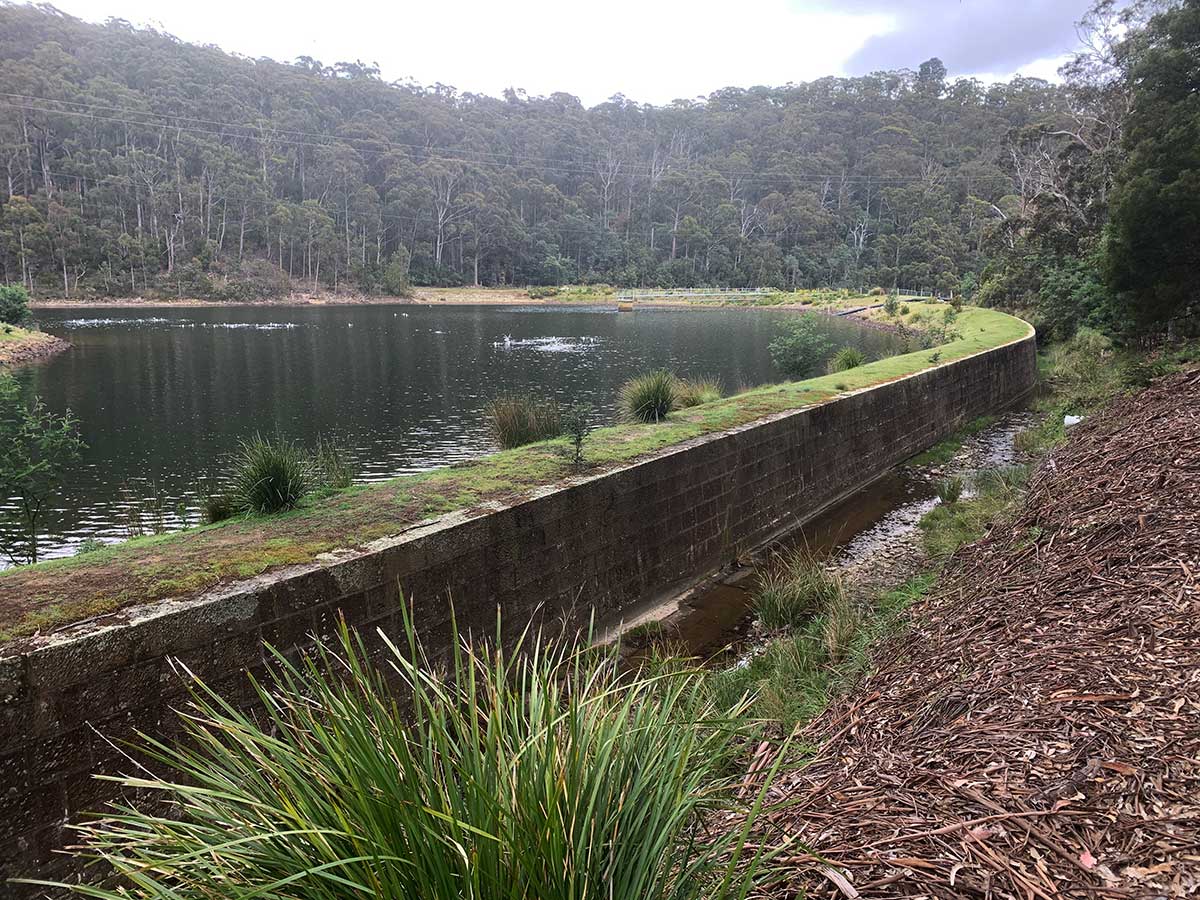
The middle reaches of Sandy Bay Rivulet can be accessed easily by driving up Waterworks Road from South Hobart, which follows the watercourse. After a couple kilometres you reach the Waterworks Reserve. The tree-shaded lawns and children's play areas of the Waterworks are popular for picnics and barbecues. For the energetic, walking tracks wander around the reservoirs and up into the bushland of Ridgeway towards the water's mountain source.
First constructed in the 1860s, the Waterworks reservoirs capture the flow of creeks and rivers rising on the higher slopes of Mt Wellington. Flowing via a network of stone and timber troughs and channels, the gathered waters arrived at the Receiving House, where today, an informative display explains the curious history of this important and historic site. Interestingly, the waters of Sandy Bay Rivulet do not empty into these reservoirs, but is carefully channelled around the southern boundaries of the two reservoirs. As the Sandy Bay Rivulet flows through the urbanised areas of the catchment, it becomes increasingly channelised and becomes subject to neighbouring prop erties encroaching the urban stream banks.
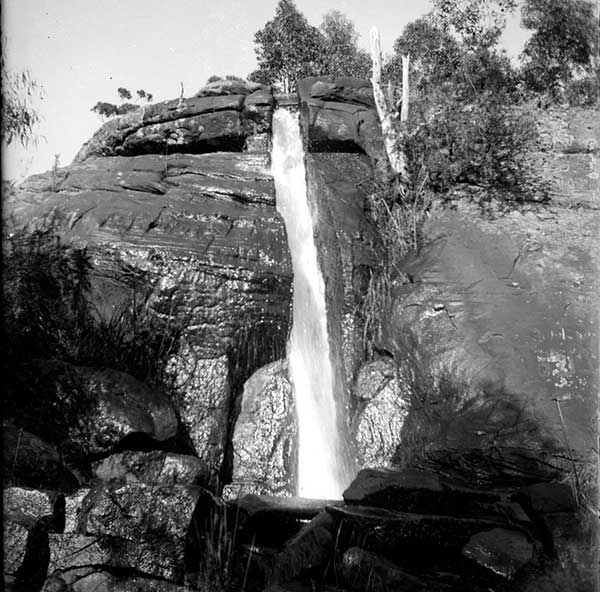
A short, loop walk through open bushland and past a ‘dry waterfall’. There days, Gentle Annie Falls is not an actual waterfall but a hand-cut channel in natural sandstone that was used to direct water into the Waterworks reservoirs. The ‘falls’ have been dry since the water was re-directed into the higher level Ridgeway Reservoir in the 1940s.
The walk begins with a short steep climb that brings you quite quickly to the base of Gentle Annie Falls. Steps cut into the stone and a hand-rail help you ascend to the top of the rock outcrop. After climbing back down follow the track through open forest before crossing Sandy Bay Rivulet and emerging at the Upper Reservoir.
Walk notes and information
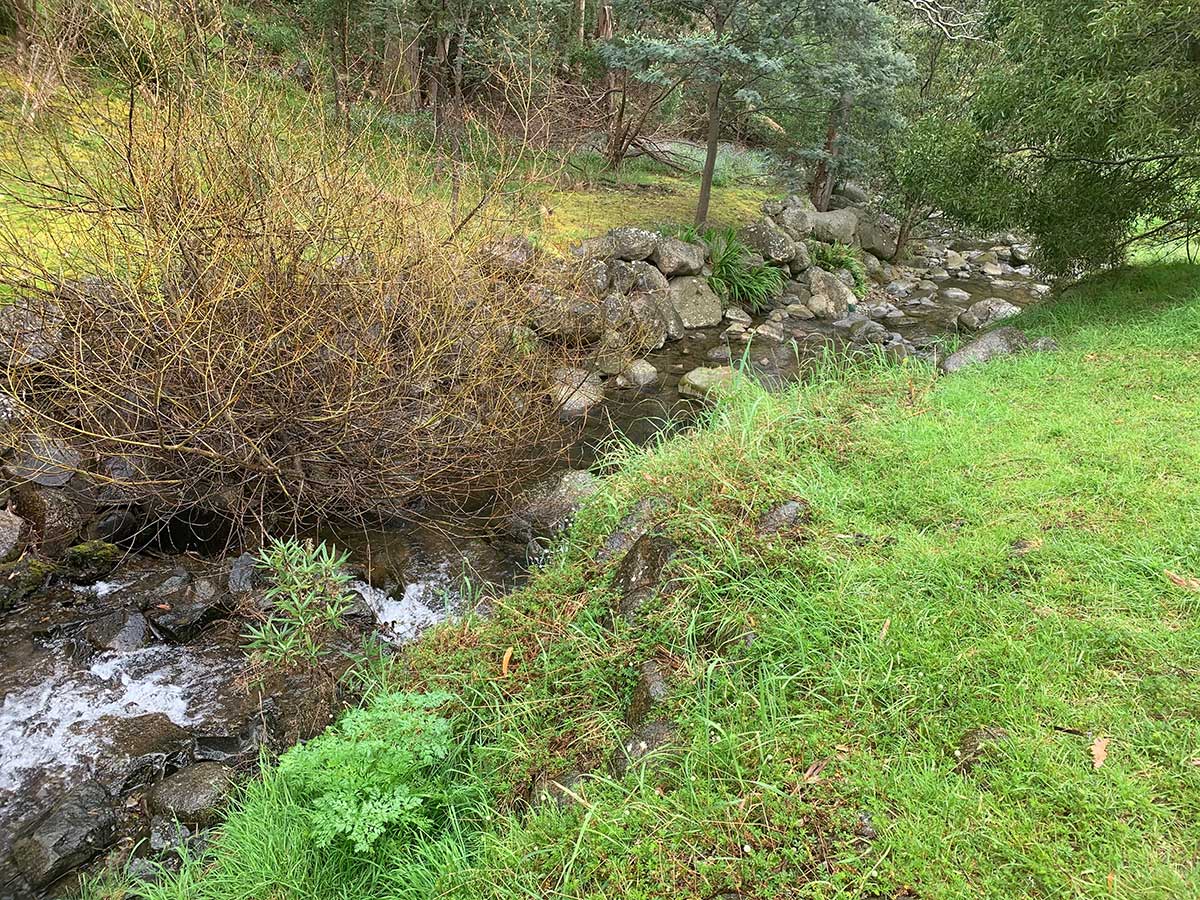
In early colonial days, the Sandy Bay Rivulet formed Hobart Town’s southern most boundary, with all outlying areas primarily used for farming. It appears on early maps as Wellington Rivulet. The development of the Sandy Bay area began as early as 1805 when 100 acres of land behind the beach and beside the Sandy Bay Rivulet was granted to Captain William Sladden. In 1892, the Queenborough Health Board and the Hobart Corporation received several complaints from landowners about the dumping of night soil into the rivulet in Battery Point.
The dumping of night soil into the rivulet was seen by many as polluting the rivulet and was deemed a health issue for local residents. It was not until 1900 that the Queenborough Town Board (otherwise known as Sandy Bay) and the Hobart Corporation agreed to combine efforts in improving the quality of the Sandy Bay Rivulet. However, the pollution of the rivulet and Marieville Esplanade remained a contentious issue for decades. The Sandy Bay area surrounding the rivulet became known as a district of market gardens, nurseries and orchards. These properties were described as having water on three sides, and were bound by the water of the Sandy Bay Rivulet and Marieville Esplanade. Further up the rivulet, areas of land were much larger and were used for dairy farming and grazing pastureland. Aside from agricultural practices, there is also evidence that an industrial activity such as a flock mill was established in the Romilly Street area.
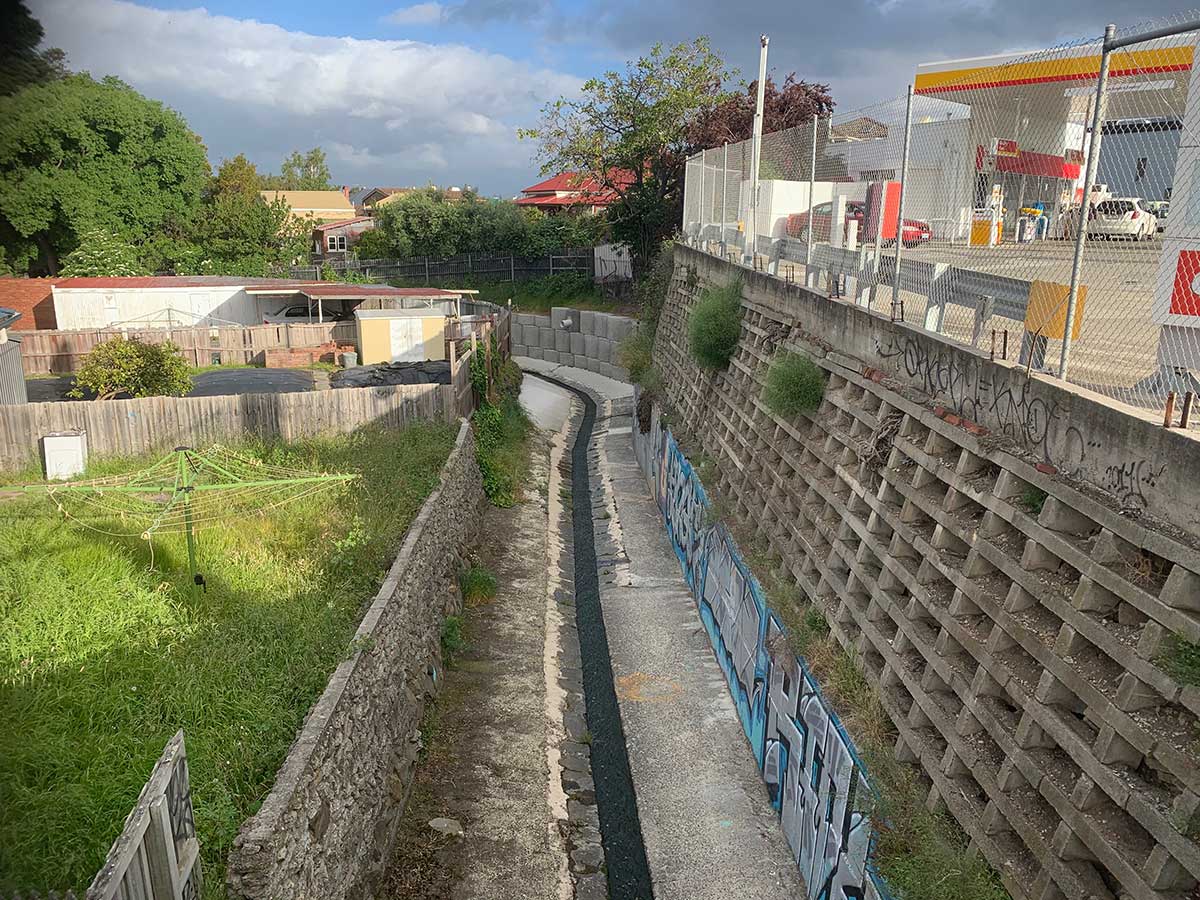
Sandy Bay Rivulet after it passes under Sandy Bay Road in Sandy Bay
The most prominent change to the Sandy Bay Rivulet occurred in 1997 when the wood lining at the end of the rivulet was removed due to the smell and rotting wood. The wood lining was previously installed as a flood mitigation measure, and then replaced with a cement channel for the same purpose in 1997. In combination with the new cement lining a new siltation trap was installed and litter traps were erected to minimise the amount of gross litter entering the Derwent Estuary. Although the cement lining of the rivulet aids in flood mitigation, this section of the rivulet is where it varied most from its natural state further upstream.
The Sandy Bay Rivulet Catchment area is utilised for a range of land use activities. Natural vegetation comprises the majority of the catchment area, particularly in the upper reaches of the catchment where little development has occurred. Vegetated areas (including all forest types) make up 402 hectares of the total 574 hectares. Urban areas utilise 106 hectares of which there are approximately 800 private houses, 20 public buildings, roads, driveways and parking areas, with an estimated catchment population of 3100.
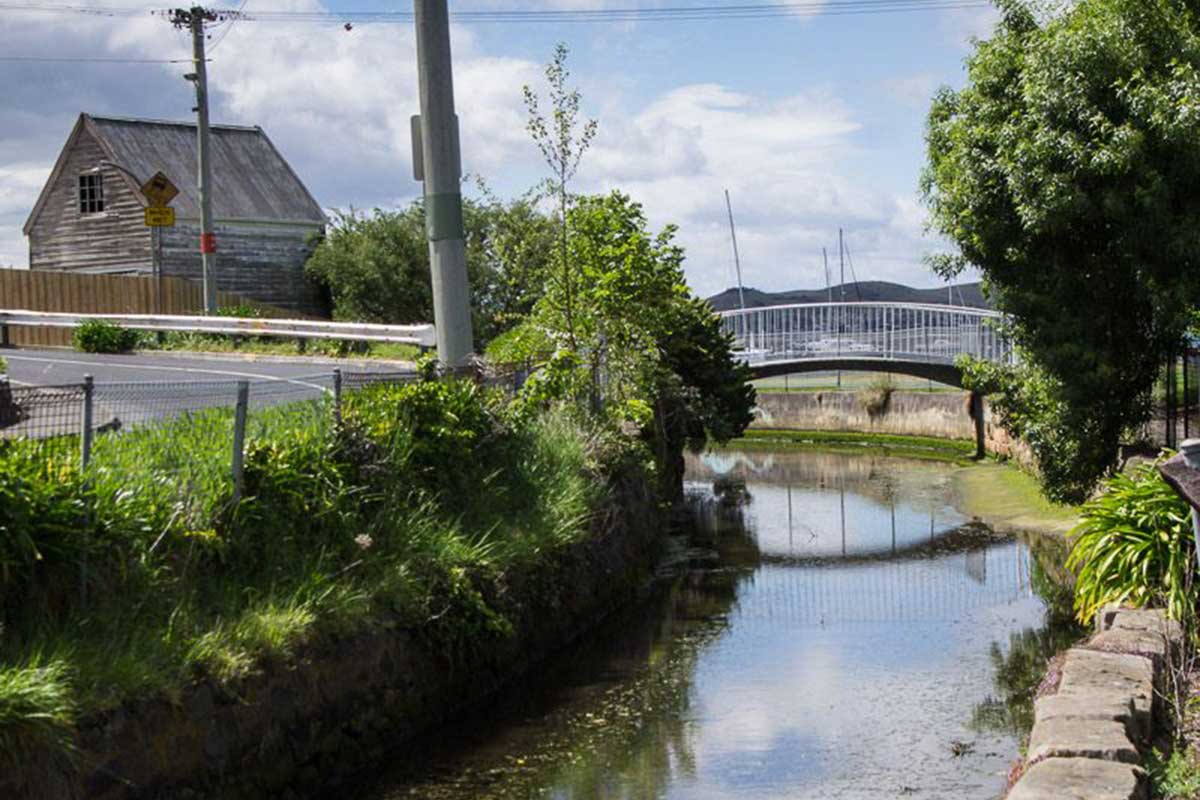
Sandy Bay Rivulet from Quayle Street, Sandy Bay
The natural values associated with Sandy Bay Rivulet are centred on the ecological integrity of the rivulet itself. It is often rare to see a stream still existing in an urban environment, and not being replaced with pipes and culverts to hide it from view. Like many of the smaller rivulets around Hobart, Sandy Bay Rivulet has been modified over time and has been perceived as a creek, a drain and a natural waterway by the people who have resided in the area.
Sandy Bay Rivulet is one of the few rivulets in Hobart that have abundant fish populations of native trout. Sandy Bay Rivulet is regarded as as relatively healthy breeding grounds, despite the presence of contaminants. These native fish have been located in many lower lying areas of the rivulet and are not present in the upper reaches of the catchment due to physical barriers such as the highway. The waters of the Sandy Bay Rivulet discharge into the Derwent Estuary, which provides habitat for many marine species, some of which are endangered. The quality of the water within the rivulet also affects species within the Derwent as waters are received along with any contaminated sediment or discharge. The flora within the catchment varies considerably between the upper and lower reaches. While the native vegetation in the lower reaches of the catchment has been replaced with European garden species the upper catchment area remains in its native form, providing refuge for a range of native fauna.
The Waterworks Valley Landcare group are also involved in monitoring water quality within a large section of the Sandy Bay Rivulet. The section monitored is in the Waterworks Valley region, that being the section of the rivulet that flows between the lower reservoir at Waterworks Reserve to the section adjacent to the Fitzroy Gardens in Sandy Bay.
Wayne Rivulet and sandy Bay Rivulet Catchment Management Plan
